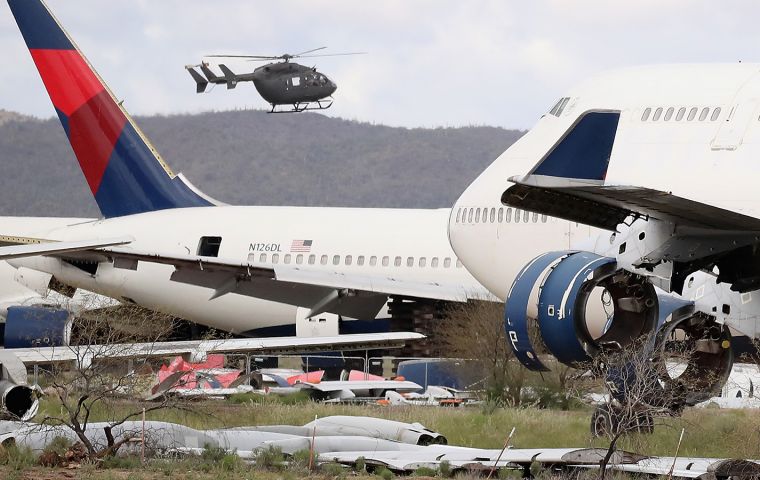MercoPress. South Atlantic News Agency
As airlines reactivate planes, regulators and insurers call for extra attention to conditions and training
 The number of “unsterilized” or poorly handled approaches has risen sharply this year, according to the International Air Transport Association (Iata)
The number of “unsterilized” or poorly handled approaches has risen sharply this year, according to the International Air Transport Association (Iata) Regulators, insurers and experts are warning airlines to take extra care when reactivating planes left in extended storage during the Covid-19 pandemic, citing potential pilot rustiness, maintenance errors and even insect nests blocking key sensors.
The unprecedented number of aircraft grounded as coronavirus lockdowns blocked air travel - at one point reaching two-thirds of the global fleet - has created a spike in the number of reported problems as airlines return them to service.
The number of “unsterilized” or poorly handled approaches has risen sharply this year, according to the International Air Transport Association (Iata). Such mishaps can result in hard landings, runway overshoots or even crashes.
Worried by Iata's data, insurers are questioning airlines about whether they are doing extra pilot training to focus on landings, said Mr Gary Moran, head of Asia aviation at insurance broker Aon PLC.
“They want to know about the circumstances of the training,” he said.
Approaches and landings place significant demands on crew for which training and regular experience are seen as vital.
According to aircraft maker Airbus SE, the largest category of fatal accidents can be traced back to the approach to an airport, while the largest number of non-fatal accidents happen during landing.
The European Union Aviation Safety Agency (Easa) has reported an “alarming trend” in the number of reports of unreliable airspeed and altitude readings during the first flight after a plane leaves storage.
In some cases, take-offs had to be abandoned or the aircraft had to return to base.
In most cases, the problem was traced back to undetected insect nests inside the aircraft's pitot tubes, pressure-sensitive sensors that feed key data to an avionics computer.




Top Comments
Disclaimer & comment rulesCommenting for this story is now closed.
If you have a Facebook account, become a fan and comment on our Facebook Page!